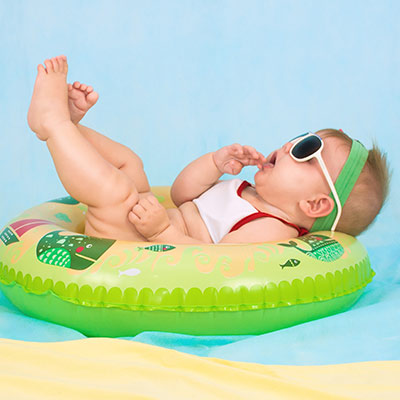 With summer right around the corner, most of us will be spending more time outdoors, and that means more sun exposure. While sunlight has many benefits such as giving us a burst of energy in the morning (by boosting endorphins!) and making vitamin D through the skin, it is important to remember that sunlight can also be damaging.
With summer right around the corner, most of us will be spending more time outdoors, and that means more sun exposure. While sunlight has many benefits such as giving us a burst of energy in the morning (by boosting endorphins!) and making vitamin D through the skin, it is important to remember that sunlight can also be damaging.
Sunscreen is the cornerstone of skin protection by blocking and/or absorbing ultraviolet (UV) rays. UV light is what damages the skin leading to hyperpigmentation, sunburns, signs of premature aging and in the worst cases, skin cancers. UVA wavelengths can lead to premature aging, while UVB contributes to sunburns. For this reason, it is important that the application of sunscreen is a staple in your routine from the springtime to fall.
Some groups of people will be more susceptible to sun damage than others, this includes:
- People with fair skin
- People with moles, especially if they are irregular in shape or large in size
- People who are exposed to excessive sunlight
- People with a history of severe burns
Moles are a group of non-cancerous melanocytes (pigmented skin cells) that group together. They are particularly susceptible to the negative effects of excessive sun exposure. If you have many moles, you should monitor them using the ABCDEEs: Asymmetry, Borders, Colour, Diameter, Elevation, and Evolution. This includes looking at the shape (symmetry is better), defined borders, a consistent colour (ranging from reds to browns), the size (>6mm), if it is elevated and if any of these factors are evolving. Changes in the ABCDEEs can be a sign to have your moles checked by a dermatologist.
What Can We Do To Protect Our Skin?
Wear light clothing, hats, and sunglasses which block the UV rays. For exposed skin, pick a sunscreen with SPF 30 or more that is broad spectrum – this will protect against about 97% of the UV rays. Make sure to reapply! Choose sunscreens without oxybenzone and retinyl palmitate as they have been shown to cause hormone disruption, cell damage and possible cancer in mice studies. Use apps like Environmental Workers Group (EWG) and Think Dirty to look at the safety of your sunscreen products. Limit your exposed skin time to 10 to 30 minutes (depends on skin tone; darker skin tones need longer) a few times a week to allow vitamin D production.
